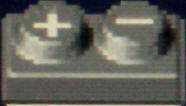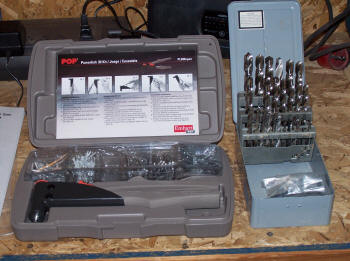 |
Making the Connection
Getting power from the Prius into the house is the reverse of a problem that has been debated (and solved) and debated some more by the electric vehicle folks. "Charging" the electric vehicle has always been a major issue, and there are two general solutions: "Inductive" charging and "Conductive" charging. One could argue forever about which is better. Or one could realize that simply because one can argue forever, there's no one answer. Our problem, even though the current is going in the other direction, has similar dimensions.
Inductive coupling
By far the biggest plus for inductive coupling is that no contact is required between the vehicle and the charger. In effect, the system uses a transformer to get energy from point A to point B. The energy is transmitted in the form of a high frequency, high power signal, very similar to that of a radio transmitter. The electric vehicle manufacturers came up with the idea of the "paddle," which is, in effect, a wire coil in a protective housing made of a high strength, non-conductive plastic. When placed in proximity (which is detected by the vehicle and paddle), the high frequency generator is turned on in the garage, the power is "transmitted" to the car, where it is rectified and used to charge the batteries.
Because there is no electrical contact between the car and the charger, the system is inherently safe in terms of shock hazard, and also advantageous in that precise alignment and contact pressure isn't required. In addition, it seems like one might devise a scheme whereby one could drive up to or over the transformer, and not have to worry about making connections.
Conductive coupling
This is exactly what you think it is. Nothing more or less than a couple of wires that connect the battery to the house. The problem is that you're dealing with an automobile which, despite the thrust of this web site, does - occasionally - go off on an adventure. The wires won't want to go along, and so they have to be disconnected before the car goes away. Which, of course, means they have to be reconnected when it comes back. Oh the tedium! The poor owner has to do something besides get out of the car and go inside.
Sarcasm aside, this is an important issue, because people will forget, and part of the purpose of this scheme is reliability. You don't want your electricity to be subject to the frail memory of someone who has just battled his way home in rush hour traffic and wants nothing more than to potate in front of the teevee. Any scheme advanced for conductive coupling should be safe and should be automatic.
Which is best?
As I said, the subject can be argued. However, for getting power from the car to the house, I have to weigh in on the side of conductive coupling. Ceteris paribus, the car-to-house direction would require the high power, high frequency "transmitter" to be in the vehicle instead of in the garage. This would add significant weight to the vehicle, which would partially vitiate the effort to keep the vehicle as light as possible. It would also be bulky, and would lose some power in the conversion process which would reduce the power available to the load. On the other hand, the additional weight penalty for a connector mechanism would be negligible.
My Pop Rivet Gun
| I actually came up with an automatic connection mechanism of
possible workability. I entered an invention contest with my
scheme, hoping to win first prize, a Prius! Alas, I didn't win
first prize. Or second. Or third. Or honorable
mention. But my entry wasn't ignored! The judges, despite
their obvious blindness, bias, and favoritism, did see fit to declare my
entry valid and sent me a pop rivet kit as a consolation prize.
It's shown here nuzzling with my drill file. Here's my contest entry. Please don't laugh at the (required) drawings. I don't do arts. |
 |
Still to be done...
Whether I use the docking station idea in the contest entry or just an ordinary connector pair, I actually have to do it. I'm looking for good, high-current connectors as I scan eBay for other toys.
UPDATE - At least for now I have settled on welding cable and Anderson Power connectors. Here are some pix and details in site update #2.
Updated 19 December 2005